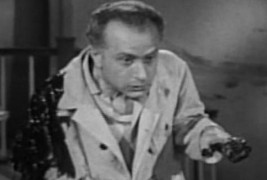
A lot has changed since 1962.
During the same year that saw the very first Wal-Mart open, THE HULK # 1 released and the web-slinging superhero Spider-Man introduced, Andy Warhol’s groovy Campbell’s Soup cans unveiled, the Rolling Stones make their debut, Marilyn Monroe die, The Cuban Missile Crisis end and the Vietnam War gaining steam, an age of innocence both in the homes of good old suburban Americana and in the media was coming to an end.
Horror cinema enjoyed a splendid year as Roger Corman brought forth three classics (Tower Of London, Tales Of Terror, and The Premature Burial) while The Phantom Of The Opera received the remake treatment compliments of Hammer Studios. Also worth noting is a film entitled The Cabinet Of Dr. Caligari, penned by Pyscho author Robert Bloch, which is hardly a remake, yet offers the same plot twist and title as arguably the most influential German film of all time.
Horror was horror! The days of gratuitous sex and over-the-top gore were still but a twinkle in Hollywood’s eye. No, we were still in the generation of practical effects, visible zippers on our monsters’ costumes and every once in a while we’d get a glimpse of Barbara Steele in a skin tight cocktail dress.
The writers and directors of that day and age had to be storytellers, however odd the tale may be. The idea of rehashing films from ten or twenty years earlier was hardly ever considered. Science fiction was crossing into the horror genre more and more, as a new technological age was on the horizon and fast approaching.
Somewhere in all of this, two of my personal all-time favorite horror flicks were released in theatres. Fifty years later, it’s time to take a few moments to bask in their black and white glory. There’s no better time to celebrate two films that are still referenced and revered as much today as they were when they were released in theatres to the masses back in 1962. Ladies and gentlemen, I present to you one of the finest double-features you will ever be invited to. Grab some popcorn, take your seats and, well, cell phones weren’t around back then, so just hush up and enjoy the show!
The Brain That Wouldn’t Die
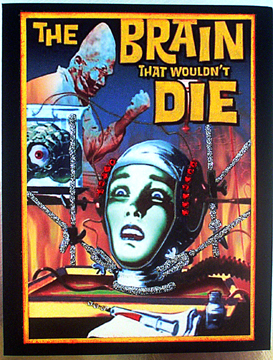
Originally finished with the title The Black Door in 1959, the film wasn’t released until 1962, complete with a new title. Directed by Joseph Green, a relatively unknown filmmaker, The Brain That Wouldn’t Die is downright fun as hell.
We meet Dr. Bill Cortner, played by the charismatic Jason Evers, a well-to-do scientist with just a little bit of insanity boiling beneath the surface. Dr. Cortner has it all — a blossoming career, an awesome car and a gorgeous fiancée named Jan Compton (Virginia Leith). One day during a pleasant car ride through the country side, a terrible accident decapitates Jan and leaves Dr. Cortner scrambling for a solution to keep the love of his life alive.
When I first saw this film, I remember feeling almost disturbed at the grisly ideas of a head being so easily removed from a body after a car accident. It’s almost humorous to see Dr. Cortner simply wrap the head up in his sports coat and dash for his secret laboratory where he hopes to revive the head and keep it alive.
Thus, we are introduced to “Jan in the pan”, one of the most odd and widely recognized horror film images of all time. A beautiful face and head attached to numerous scientific gadgets while sitting in a liquid filled tray. This is what Cortner’s beloved fiancée has been reduced to and it’s why Cortner soon decides to find an attractive woman and murder her with the hopes of attaching Jan’s head to the voluptuous body of his choice. If you haven’t caught wind of the twisted Frankenstein homage just yet, I assume that you are too absorbed with Dr. Cortner’s assistant Kurt and his deformed hand from a “laboratory accident”.
While Cortner is out cruising the town, yucking it up with the local hotties and planning his next move, Jan is stewing in her pan, plotting a murderous agenda of her own. Desperate to rest in peace, Jan has grown to despise her fiancé. Through telepathy, she begins to communicate with the mysterious mutant locked away in the holding cell on the other side of the laboratory. The plan is set — Dr. Cortner must be killed.
Poor Kurt, the trusty assistant with the awesomely ambiguous story of how his hand was disfigured, is the first victim of the mutant monster. Why you would feed a monstrosity created by a science experiment gone horribly wrong and then stand in front of its cell to chit chat is beyond me. But the dimwitted decision by Kurt allows the viewers to enjoy one of the most fun and gory deaths (for its time) in cinema, as Kurt is torn to pieces by the giant hand emerging from the depths of its cell.
In the meantime, Cortner has decided on a body for his fiancée. Doris Powell, portrayed by the stunning Adele Lamont, is the lucky gal who will be drugged, taken to the lab and then beheaded all in the name of love. Amidst Jan’s defiant protests and Doris’ slow awakening, Cortner now decides it’s a good idea to stand in front of the lab monster’s lair and if you thought he’d have a better fate than assistant Kurt, you just haven’t been paying much attention to the film!
When we finally see the monster that’s been carrying out Jan’s plan, we see a creature well over seven feet tall, with a hideously deformed face and head. The Monster was played by Eddie Carmel, a well-known circus performer who worked under the name “The Jewish Giant”. Carmel suffered from gigantism (he was said to be over eight and a half feet tall, although more accurately, he was nearly 7’6″) and made his film debut in this project.
With the mad scientist and his assistant disposed of, the laboratory is set ablaze as the monster carries Doris outside to safety while good ol’ Jan In The Pan howls, “I told you to let me die”, cackling until the film fades to black.
This is one of my favorite films for many reasons, most notably the gruesome death of Kurt and the idea that a human head can survive solely by attaching mechanisms to it and setting it in a pan of liquid as if it were a tres leches cake. While the film is campy and the acting is the epitome of old school horror, it is absolutely worth a far better rating than the 3.7 it currently holds over on IMDB.
If you haven’t seen this one, do yourself a favor and pick it up — it’s on about fifty different cheap horror film DVD sets all over the likes of Wal-Mart and Best Buy. You will not be disappointed.
Carnival Of Souls
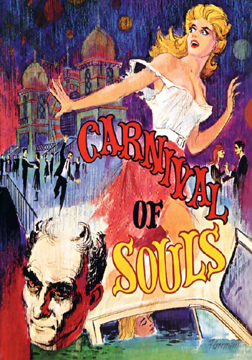
This cult classic was reportedly made for $33,000 by director/producer Herk Harvey. This was Harvey’s sole feature film and not only did he direct the project, he also played the creepiest role in the film.
Carnival Of Souls is regularly cited as a major influence of several horror directors, including George A. Romero. Released to a lukewarm reception fifty years ago, it has since gained a huge cult following and is most comparable to our generation’s The Sixth Sense.
Mary Henry (Candace Hilligoss, hired as a completely unknown actress) is enjoying a car ride with two of her friends when a couple of stud muffins challenge them to a drag race. During this race across a bridge, the women’s’ vehicle falls over the side and into the murky river below. Police spend hours searching the river for the women, to no avail.
Suddenly, Mary surfaces, suffering from amnesia and looking like death warmed over.
An accomplished church organist, Mary takes a new job in Utah. Things start to get weird shortly thereafter. She is entranced with an abandoned pavilion that’s just as foreboding as the eerie organ music playing on her car radio no matter what station she turns it to and ghostly images soon follow.
To this day, one of the best jolts you’ll get from a film is seeing “The Man”, played by director Harvey, glaring back at Mary in the passenger window of her car as she drives through the night. This will not be Mary’s lone encounter with The Man, and soon, we learn more about the mysterious pavilion that seems to have caught more than Mary’s eye.
Before shutting down for good, the pavilion held a carnival that seems to hold more questions than answers. As Mary struggles with her attraction to the dilapidated pavilion and her increasingly frequent visions of The Man, she also begins to realize there are times when she seems to be completely invisible to anyone and everyone around her.
Like most horror films, even modern ones, Mary begins to really lose it just as the strapping young fellow named John Linde from down the hall starts to fall for her. After a dinner date that ends in her room and with a vision of The Man in her mirror, Mary tells the tale to John (Sidney Berger, who often quotes Roger Ebert’s comment on this character- “the definitive study of a nerd in lust”) and John immediately dismisses her as going crazy. He leaves and Mary is left alone with her visions and supernatural symptoms.
When Mary finally makes her way to the pavilion, the visit proves to be fruitless. She sees nothing, hears nothing and gets no answers.
The ghosts are growing in number and they are fixated on capturing Mary. When she boards a bus to get out of Dodge, she quickly realizes that all of the other passengers are ghosts. She suddenly wakes up, in a fit of fright, but relieved to find she dreamed the sequence.
With the creepiness, both of the subtle and not-so-subtle variety, kicked into high gear, Mary returns to the pavilion with even more questions that she desperately needs answered. There, she sees the ghosts dancing in harmony and she realizes that one of the ghosts is her, dancing with The Man. So distraught over what she has seen and learned, Mary tries to run away from the deserted carnival, but the ghosts quickly close in after she collapses on the beach near the pavilion.
As the film concludes, we see the car finally pulled from the river…with Mary’s body in it.
And that‘s how you make a psychological thriller in 1962, folks! We’re used to this twist these days, but I can only imagine the audience reactions in the theatres back then! This was a fantastic new wrinkle in terror for its time and Harvey is to be applauded for his efforts, both as actor and director.
The film has since been remade and it absolutely sucked. Is anyone surprised? Sidney Berger does make a cameo in the film, but Hilligoss declined to, citing disrespect from the filmmakers re-doing the classic. Fist pump to Ms. Hilligoss!
Truly ahead of its time, Carnival Of Souls should be atop your To-Watch list if you haven’t done so already.
I will forever love classic horror films — the grainier, less CGI, more storytelling, the better. You’ve been steered towards two of the best films of the genre to come out in the last fifty years. I hope you enjoy them as much as I do. If not, zip it — Michael Bay will be destroying another classic any day now.
2 thoughts on “The Brain That Wouldn’t Die and Carnival Of Souls: 50 Years of Terror”
Comments are closed.


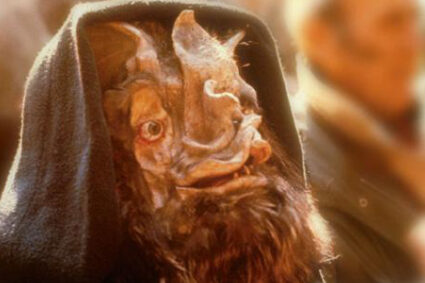
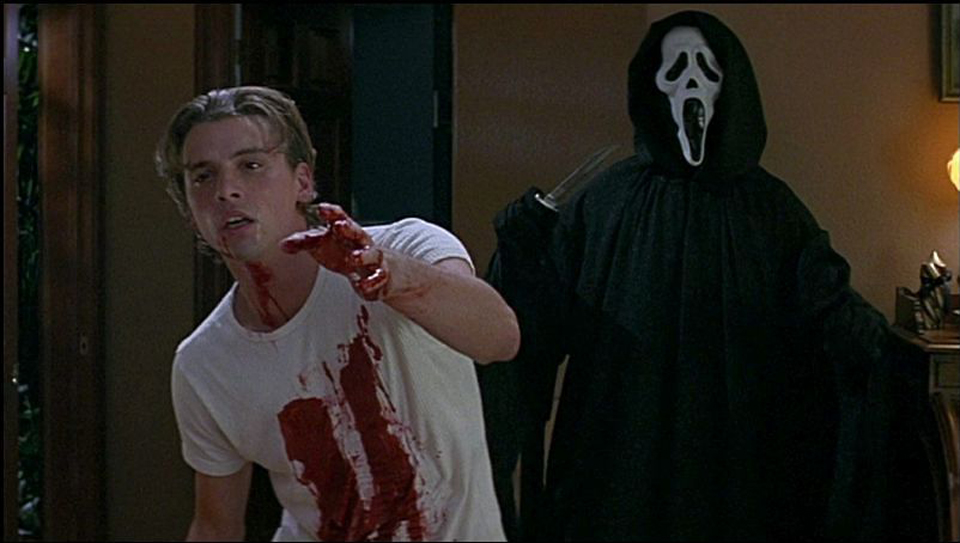
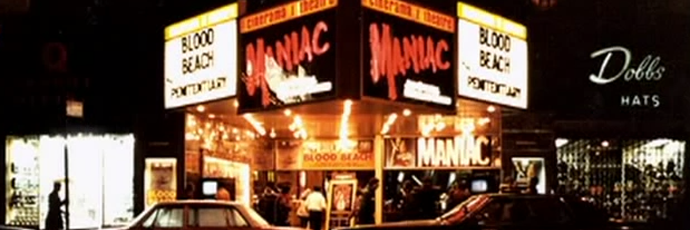










Fantastic article! I’ve written about “Brain” myself and for a brief time, I was close to putting together a TV horror host project based on the movie.
Thanks kindly!
That would have been quite interesting to see- Jan In The Pan would make a great co-host!